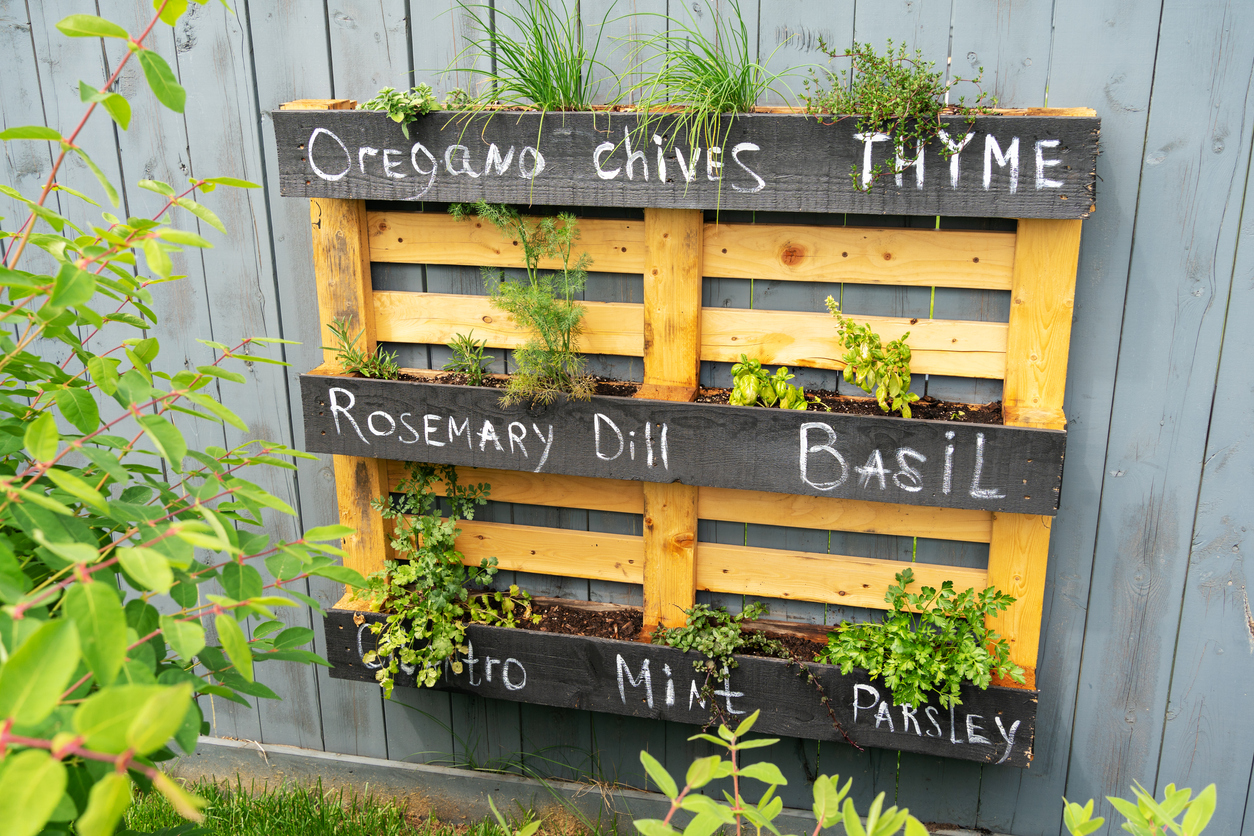In the middle of the Boston Museum of Science there is a floor-to-ceiling living plant wall surrounding a 30-foot waterfall. If you’ve been fortunate enough to see this vertical planting system in person, you know how awe-inspiring it is. I’ll be the first to admit that I’d love to have a three-story tall garden as one of the walls of my home. I’m also not holding my breath. For most of us, that’s not a very practical or realistic future.
That wall, however, presents an interesting possibility for gardeners who either don’t have a lot of space, or just want something a little different. There’s no law that requires us to garden in the horizontal plane (unless you count gravity, but that’s a minor detail). That means we have lots of room to go up.
Naturally, there are some enterprising companies who’ve thought of this and are happy to sell you a vertical planting system. Some of them are really cool… and really expensive. But if you don’t mind putting in a little bit of work, it’s easy enough to make your own.
Discover 7 top tips for growing, harvesting, and enjoying tomatoes from your home garden—when you access the FREE guide The Best Way to Grow Tomatoes, right now!
A DIY vertical planting system that won’t cost you a dime
There are plenty of ways you can build your own vertical planting system. Some people prefer small, wall-mounted systems while others like something that rests on solid ground. They can be freestanding, leaning against a wall, hanging from the ceiling or other support structures. They can be minimalist, arty, or strictly utilitarian. You can make them from wood, recycled materials, or 24-karat gold (though that might get pricey). In other words, the only requirement for a vertical planting system is that it’s vertical. In fact, if you’ve ever planted vining vegetables, like pole beans, you’ve already delved into vertical planting.
Perhaps the most popular DIY vertical planting system is a recycled pallet. There’s good reason for that. They’re readily available – you can often find them behind grocery stores and other big-box type stores. Just ask before you take them; some stores reuse them. You can paint them any color you want. And they’re easy to turn into a vertical garden. How?
- Securely staple or nail fabric to the back of the pallet, wrapping enough around the front to create a bottom. I like to use old burlap coffee bags from a local roaster when I can get them, but recycled plastic works, too.
- Resting your pallet at an angle or even flat on the ground, fill it with planting mix.
- Plant your seedlings. Once the plants get established, the roots will help keep the soil in place.
- Plant vining vegetables like small melons on the bottom row. Stick with herbs and greens in the middle rows, and you might be able to get away with cherry tomatoes or other small vegetables on the top row, although I usually go with greens or strawberries.
Beyond that, it’s just a matter of tending your vegetables like normal. One bit of other advice I might add is that you’ll get better results if you plant vegetables and herbs that enjoy the same amount of sunshine and water.
Have you had luck with a vertical planting system? Any advice you’d like to share in the comments?
Discover 7 top tips for growing, harvesting, and enjoying tomatoes from your home garden—when you access the FREE guide The Best Way to Grow Tomatoes, right now!
